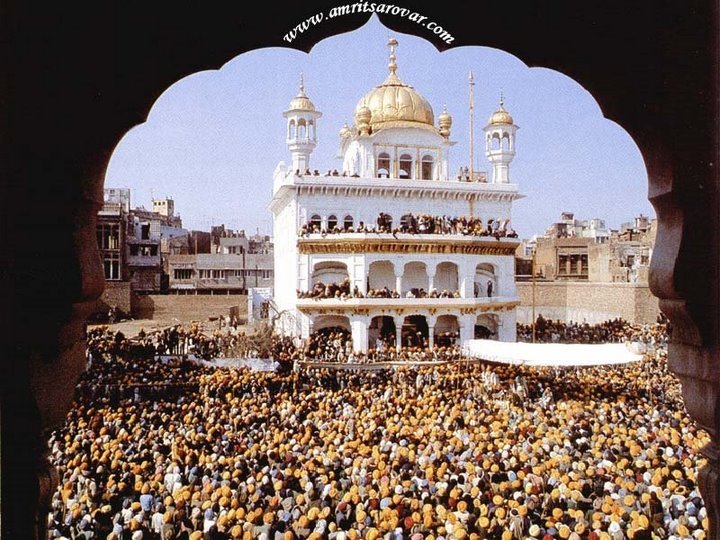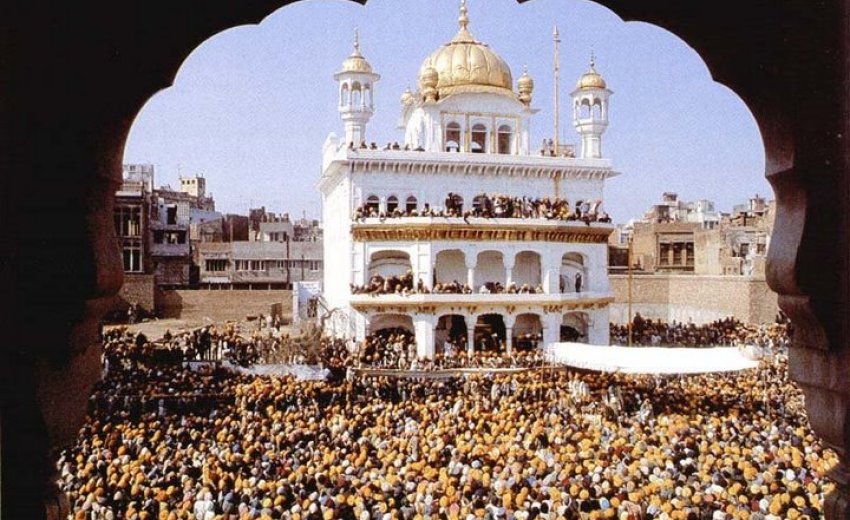 I heard as recently as last Sunday at a Baltimore gurduara, that Sikhs don’t know how to make their own decisions. True, and false.
I heard as recently as last Sunday at a Baltimore gurduara, that Sikhs don’t know how to make their own decisions. True, and false.
For more than a century (1699-1805), Sikhs made tough, controversial, politically incorrect, yet reached consensus-driven, time-sensitive, and decisive conclusions via the institutions of the Sarbat Khalsa and the Gurmata. And this was accomplished during a century that saw half of Sikh population killed in a single genocidal campaign.
It has taken more than 200 years to dismantle these systems of consensus building; it will take a concerted effort for at least 20 years to revive it. This process will require complete openness and inclusivity. It is a risk worth taking and a solemn opportunity to grasp what others deemed worth dying for!
Sikhs worldwide responded to the recent Rajoana phenomenon with stunning solidarity. Governments, politicians, and spiritualists weren’t sure what was going on. Musicians used the opportunity to wash-off their “sins” of sycophancy from the last Punjab election promos. People-at-large were excited, but they were not prepared. I felt personally that I failed to convince myself of what matters most, and I failed to convince the activists (both the Tweeting and sloganeering kinds) to do something meaningful in any concerted way. I concluded that we self-deluded panthak folks failed everyday-Sikhs at this historical moment with an engagement policy. There was no mechanism to decide what the Panth must do at the crucial tipping point of actionable potential.
So here I am, asking some tough questions: Are you one of 26-million Sikhs who feels that you have no voice? Are you skeptical of intra-Sikh decision making? How come it is always men, and seemingly religious men, who are always doing the deciding? Doesn’t it seem like it’s just a few hyper-active, theo-politcal Sikhs in Punjab who are deciding all Sikh business? Isn’t that taxation without representation? How can our process become more representative of the rich and varied demographics that make up our global Sikh communities? The list of our concerns is long, littered with legitimate complaints and dotted with glimmers of wishful thinking
The Vaisakhi of 1699, among other notions, was about the de-centralization of powers. Since its inception the Khalsa is sovereign and so too are its independent institutions and processes. This had to be so, to ensure there would be no Maharajas, no one despot clutching at his absolute power. We had one of those once, and while he was a model South Asian ruler, he also made Harimandar Sahib “golden” and undermined Khalsa traditions.
In 2012, we might borrow a question from Edward Said and ask, “Who are the representatives of the people?” Will we continue to look for “orders” to follow handed down from the installed officers of the Panth? Our Gurus trained us for 238 years so we could make the best possible decisions, decisions which are not founded in the dictum that the “end justifies the means.” Rather, decisions that are grounded in consensual process based on infinite wisdom imparted by the Guru, and interpreted for the whole of the Sikh commonwealth.
Men and women, young and old, pendu and shahri, online and offline, Panjabi and non-Panjabi, ravidasi and jatt—they are all waiting for an open and progressive agenda, waiting to serve the One Panth. But how are we building their capacity to make sure they are not only heard, but have a potential seat at the table?
The history of Sarbat Khalsa was so admirably practical because it was about dealing with the real issues, not doctrinal and philosophical vagaries. Let’s learn to sit together and deliberate. And let us not allow personal preferences to distract us from the real challenges which clamor loudly—demanding our attention.
I have been part of one such initiative to start dealing with decision-making process, by helping to organize and present Sikh Research Institute’s series of one-day Saneha workshops from Vancouver to Toronto to Oxford. In just a few weeks, on July 21, this workshop comes to New York City for Misl Amrika.
This post is an open invitation to all organizations, gurduaras, clubs, jathebandis, and SSAs who identify themselves as Sikhs. Register at least two representatives at www.revivingsarbatkhalsa.com. Ratan Singh Bhangu’s Sri Guru Panth Parkash is probably the first “people’s history” of Sikhs, that describes how panthak-ness was not a slogan, but a lifestyle by which Sikhs dined and deliberated with mutual respect. A microcosm of that lifestyle will be exercised towards capacity building, so that when the next opportunity of Sarbat Khalsa occurs, the voices of the Sikhs nation will be represented. Even if such a gathering is banned by the state as it was in 18th, 19th, and 20th centuries. May we feel the presence of Ik Oankar and the sovereignty of Guru Granth-Panth.
Let us become the residents of Anandpur Sahib!
Harinder Singh is a co-founder of the Sikh Research Institute and the Panjab Digital Library. He is interested in anything Sikhi, esp. institutional development towards community building. His Twitter handle is @1Force.
